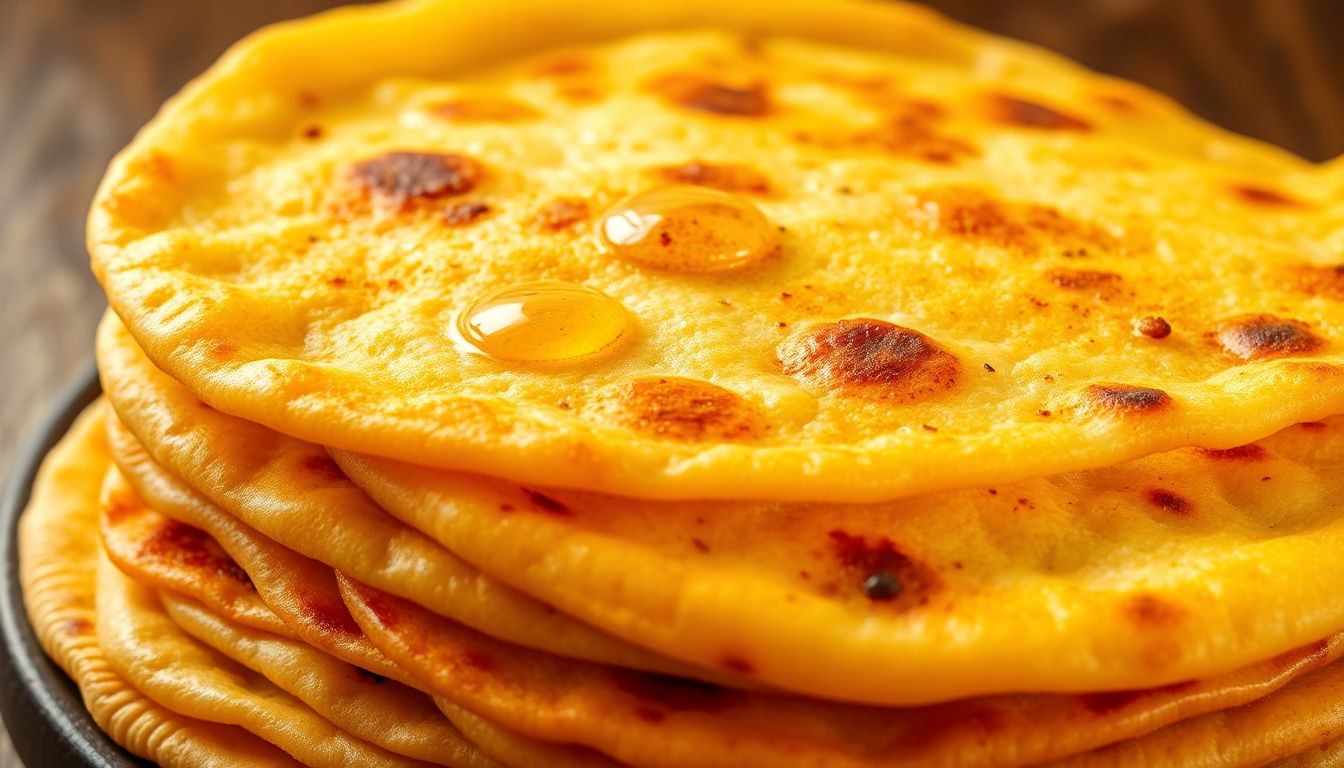
Mastering the Art of Aloo Paratha: Delicious Recipes and Expert Tips
The allure of aloo paratha captivates many. This hearty Indian flatbread filled with spiced potatoes offers comfort and satisfaction. Aloo paratha is not only a staple at breakfast tables but also finds its way into lunches and dinners, making it a beloved dish.
The Popularity of Aloo Paratha in Indian Cuisine
Aloo paratha has a special place in Indian hearts. Found in homes and eateries alike, it's often served with a variety of side dishes. From the bustling streets of Delhi to family kitchens, this dish brings people together.
Aloo Paratha's Versatility: Beyond the Traditional
While the traditional aloo paratha features a simple potato filling, its versatility allows for many variations. Chefs and home cooks alike experiment with different ingredients and spices, appealing to a wide range of tastes.
Setting the Stage: What Makes a Great Aloo Paratha
The secret to a perfect aloo paratha lies in the balance of flavors, textures, and cooking techniques. Getting the filling just right and achieving the desired crispiness makes all the difference.
The Perfect Aloo Masala: Flavor Foundations
Selecting the Right Potatoes: Texture and Taste
Start with starchy potatoes, like Russet or Yukon Gold. These varieties hold their shape when cooked and mix well with spices, creating a delicious filling.
Building Layers of Flavor: Spices and Herbs
A flavorful aloo masala needs a blend of spices. Common choices include:
- Cumin seeds for earthiness
- Coriander powder for warmth
- Garlic and ginger paste for zest
- Green chilies for heat
- Fresh cilantro for brightness
Mastering the Art of Potato Cooking: Avoiding Mushy Potatoes
Boil potatoes until fork-tender, but avoid overcooking. Once done, let them cool before mashing. This keeps the texture firm and prevents a mushy filling.
Dough Preparation: Achieving the Perfect Texture
Flour Selection: All-Purpose vs. Whole Wheat
Whole wheat flour is traditional for aloo paratha. It adds flavor and nutrition, but all-purpose flour gives a lighter, crispier texture. Choose based on your preference.
The Importance of Kneading: Achieving Elasticity
Knead the dough well to develop gluten. This creates an elastic texture that makes rolling easier. Aim for a soft, pliable dough.
Adding Flavor to the Dough: Enhancing the Paratha's Taste
For an extra flavor boost, consider adding a pinch of salt and a teaspoon of caraway seeds to your dough. This step enhances the overall taste.
Paratha Cooking Techniques: From Novice to Expert
Achieving Golden-Brown Perfection: Heat Control
Cook aloo parathas over medium heat. This allows them to brown evenly without burning. Flip them when you see golden spots.
Mastering the Art of Rolling: Thin and Even Parathas
When rolling the dough, keep it even. Use light pressure to achieve a round shape. Thin edges will crisp up nicely while keeping the center soft.
Cooking Methods: From Tawa to Skillet
Use a flat tawa or skillet to cook. A cast-iron skillet retains heat well. For better results, apply a little oil or butter while cooking.
Delicious Aloo Paratha Variations: Expanding Your Culinary Horizons
Spicy Aloo Paratha: Adding a Kick
For those who love heat, mix finely chopped green chilies and a dash of red chili powder into the potato filling. This adds a flavorful punch.
Herb-Infused Aloo Paratha: Fresh and Flavorful
Try adding finely chopped mint or spinach leaves to your filling. This not only enhances flavor but also adds a nutritious boost.
Cheese-Stuffed Aloo Paratha: Indulgent Delight
Add grated cheese into the potato filling for a creamy, indulgent variant. As it melts, it creates a rich, comforting experience.
Serving and Enjoying Aloo Paratha: The Ultimate Experience
The Perfect Accompaniments: Yogurt, Chutney, Pickles
Serve with yogurt, tangy pickles, or flavorful chutneys. These sides enhance the paratha's taste and add variety.
Aloo Paratha as a Main Course or Side Dish
Enjoy aloo paratha as a main dish or a side. It pairs well with various curries, making it versatile.
Tips for Storage and Reheating
Store leftover parathas in an airtight container. When reheating, use a skillet to restore crispiness. They can also be microwaved, but may lose their texture.
Conclusion: Your Journey to Aloo Paratha Mastery
Key Takeaways: Mastering the Art of Aloo Paratha
Perfecting aloo paratha is about mastering ingredients and techniques. With practice, you can create a dish that delights everyone.
Resources for Further Learning: Books, Websites, Blogs
Explore cookbooks or food blogs focused on Indian cuisine. They offer valuable tips and recipes to expand your culinary repertoire.
Embracing the Culinary Adventure: Experimentation and Innovation
Don't hesitate to experiment with fillings and spices. Each variation offers a new experience, keeping your aloo paratha journey exciting. Embrace the culinary adventure!






0 Comments